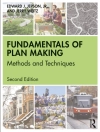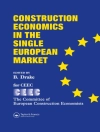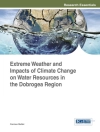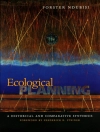This book investigates the current and future state of freshwater and the global drive to achieve the UN sustainability goal. It first explores the major barriers to achieving the goal and then examines some of the programs water managers are adopting to overcome those barriers. These programs include finding new ways to supplement existing water supplies, and greater acceptance of alternative supplies, such as recycled waste water and desalination; green infrastructures, and rain and storm water harvesting. It concludes with two chapters on water management tools, including asset management and strategic planning, which are of particular interest to small water and wastewater utilities.
สารบัญ
Part I: Water for a Sustainable Future.- Chapter 1. The Global Goal of Sustainable Growth.- Chapter 2. Water’s Role in a Sustainable Future.- Chapter 3. The Global Need for Water Sustainability.- Part II: Barriers on the Path to Sustainability.- Chapter 4. The Barrier of Climate Change.- Chapter 5. The Population Growth Barrier.- Chapter 6. Water and Unbridled Urbanization.- Chapter 7. Inefficient Agriculture Water.- Chapter 8. Water Thirsty Energy Production.- Chapter 9. The Barrier of Failing Infrastructure.- Part III: Pathways to Water Sustainability.- Chapter 10. Pathways to a Secure Water Supply.- Chapter 11. Pathways to Sustainable Cities.- Chapter 12. Pathways to Sustainable Agriculture.- Chapter 13. Pathways to Water-Smart Power.- Chapter 14. Paths to Alternative and Supplemental Sources.- Chapter 15. Pathways to Supplemental Water and Green Infrastructure.- Chapter 16. Pathways to Alternative Water Supplies.- Part IV: Innovative Water Management.- Chapter 17. Managing Assets for Water Sustainability.- Chapter 18. Planning for Sustainability.
เกี่ยวกับผู้แต่ง
David E. Mc Nabb, Ph.D. is the elected audit commissioner of a combined water and wastewater district in the Pacific Northwest, and Professor Emeritus of the Pacific Lutheran University School of Business. He has taught business and public administration courses for Oregon State University, the University of Washington-Tacoma, and the University of Maryland-Europe. This is his 15th book. His previous works include Water Resource Management, Comparative History of Commerce and Industry, Nation Building in the Baltic States, Research Methods for Public Administration and Nonprofit Organizations, and Research Methods for Political Science.












